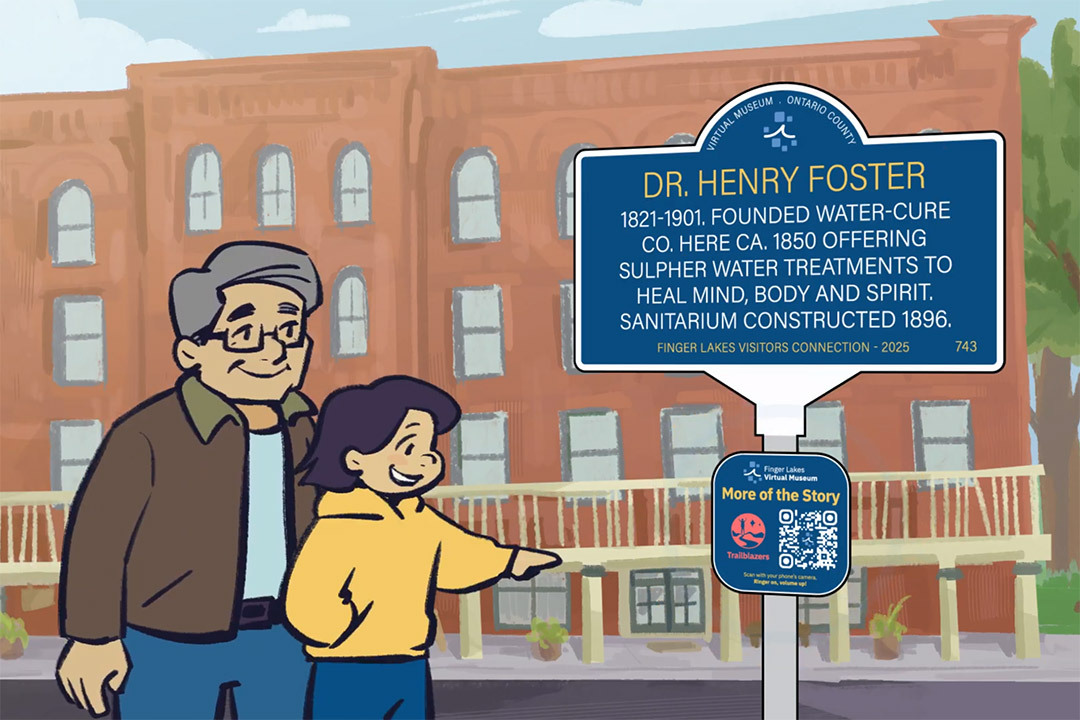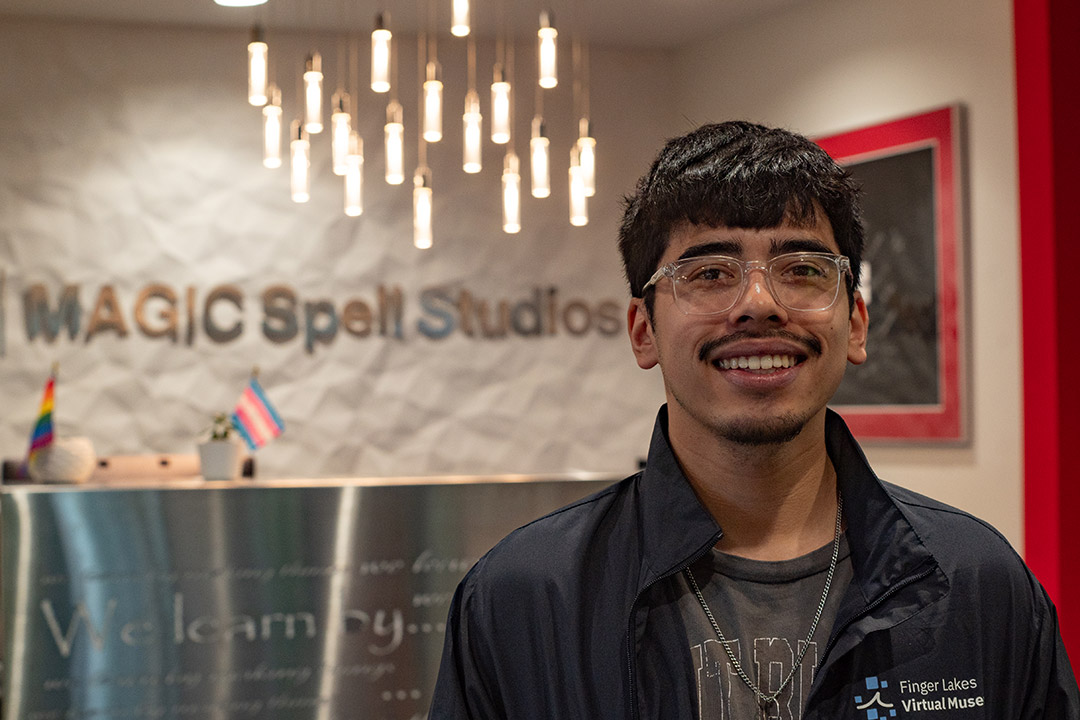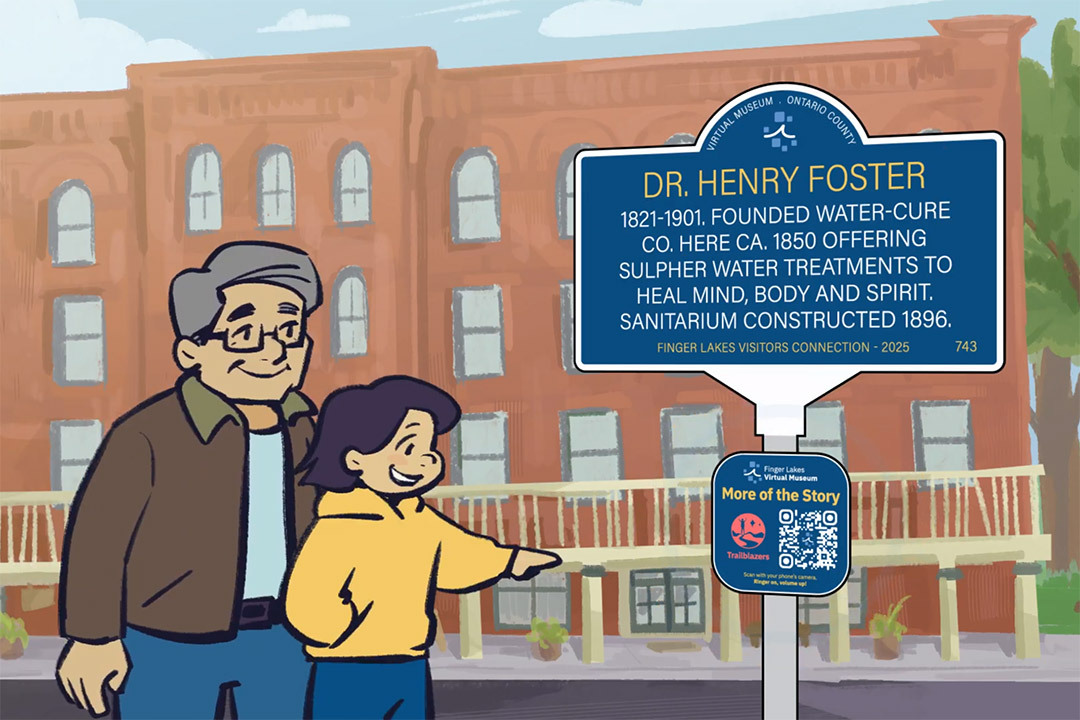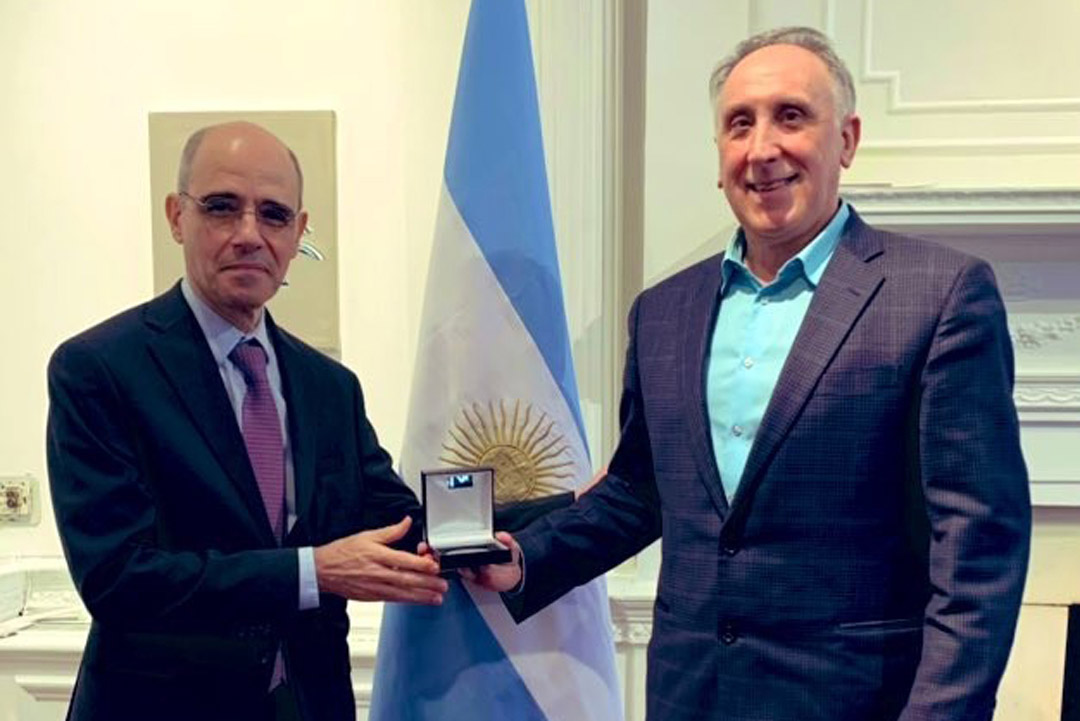Finger Lakes Virtual Museum app brings regional heritage to life through augmented reality and interactive storytelling

Provided
The Finger Lakes Virtual Museum app, created primarily by RIT students through MAGIC Spell Studios, will bring the region to life through the digital storytelling platform when it launches this fall.
A collaboration between RIT and the Finger Lakes Visitors Connection is about to change how people experience local history in Ontario County, N.Y.
The Finger Lakes Virtual Museum app—developed primarily by students and set to launch publicly this fall—is a digital storytelling platform that combines historical content with technology to create immersive visitor experiences.
The idea began with Finger Lakes Visitors Connection, the county’s official tourism promotion agency, which wanted to add “more of the story” to historic markers across the region. Backed by a grant from New York State Empire State Development, the project was brought to RIT’s MAGIC Spell Studios to engage students in real-world development work.
“This is exactly the kind of hands-on, real-world experience that students need,” said Diane Linnet, project director, business development and adjunct professor at RIT. “It’s not hypothetical. They’re working with clients, managing deadlines, solving creative and technical challenges, and seeing the direct impact of their work on the community.”
A multidisciplinary team of students collaborated over the past year on everything from design and user experience to content creation, and included 2D- and 3D-digital storytelling, augmented reality, photo and video production, and location-based interactive activities.

Provided
RIT student Jason Salazar Tobar, who was augmented reality developer on the project, used the experience to reflect on the cultural impact of his work.
When launched, the app will be accessible through a web platform and as a downloadable mobile app. Visitors to Ontario County will be able to scan QR codes on historic signs and access curated digital content that adds to each location’s story.
Jason Salazar Tobar, a fourth-year individualized program major from Mount Kisco, N.Y., served as augmented reality developer, and used the project to continue exploring his interest in how emerging technologies can intersect with art, culture, and live performance. This past March, he and Max Stromfeld ’25 (graphic design) debuted a prototype of the app during a conference in Dubrovnik, co-organized by RIT Croatia.
“This project gave me a whole new perspective on the museum world,” said Salazar Tobar. “I started thinking more like a curator and asking deeper questions like, ‘What are we trying to make the user feel?’ It pushed me to go beyond just making something cool and really considering the cultural impact of the experiences I was building.”
Linnet added that projects like this are helping to enrich the region’s tourism while preparing students for industry.
“We’ve already seen students go into interviews where this project was a major conversation point,” she said. “That’s the kind of return on investment that benefits everyone—students, universities, and communities.”









